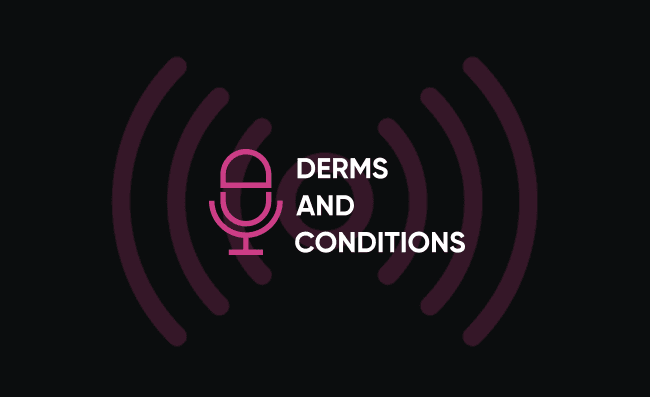Derms and Conditions Podcast Episode 58:
Removing the Confusion Surrounding Some Commonly Used Therapies
Release Date: August 24, 2023
In episode 58 of Derms and Conditions, our host, Dr James Q. Del Rosso, presents a self-made episode where he discusses some clarifications regarding commonly misunderstood therapies in dermatology. Dr Del Rosso begins by discussing the use of benzoyl peroxide (BPO) for papulopustular rosacea and notes that many providers are hesitant to use this treatment given the perceived irritant effects. He notes that the microencapsulated BPO 5% cream (FDA approved EPSOLAY®), specifically formulated to allow for the slow release of the drug in the skin, is the only formulation proven to be efficacious, safe, and tolerable in rosacea. He summarizes a 12-week study of patients with moderate to severe papulopustular rosacea in which 25% of patients were clear or almost clear at 4 weeks with total inflammation reduced by 70% at 12 weeks. In addition, he notes that the tolerability was favorable with no differences noted between the active and vehicle groups.
Next, Dr Del Rosso discusses clascoterone 1% cream, FDA approved for twice daily use for acne in patients aged 12 years and older with no limitations on duration of use. He explains findings from a recently published study that show even with the maximum use of clascoterone, 4 to 6 times greater than the normal 1-gram dose, there were no clinically significant hyperkalemia readings, adverse events, or EKG changes in any participant in the control or experimental groups. Given its topical use, negligible systemic absorption especially when used as recommended, and the findings of this study, Dr Del Rosso agrees that clinicians should be reassured about the lack of risk of hyperkalemia with clascoterone use.
Lastly, Dr Del Rosso switches focus to Janus kinase (JAK) inhibitors and biologics. He discusses where the boxed warnings for JAK inhibitors originated and why they are not as concerning overall with oral JAK inhibitors used for dermatologic indications in younger populations who exhibit fewer comorbidities and/or concomitant therapies. In addition, he notes that the risk of several side effects of special interest, such as lymphopenia, malignancy, and thromboembolic events are quite low. He also emphasizes that not all monoclonal antibodies with similar modes of action exhibit the same pharmacologic and therapeutic profiles. In a selected case where a patient with AD has an inadequate response or adverse event such as persistent conjunctivitis caused by dupilumab (which inhibits IL-13 and IL-4), case reports have shown that changing to another monoclonal antibody that inhibits IL-13 (ie, tralokinumab) can exhibit relevant efficacy without associated conjunctivitis. Ultimately, it is good for clinicians to have options and as much data as possible to differentiate their use. He concludes that although certain drugs are part of the same category or class, they all have differences in pharmacokinetics, and the benefits and differences of each drug must be understood to optimize treatment selection for individual patients. Tune in to this episode to learn all the valuable clinical pearls surrounding many commonly confused therapies!
